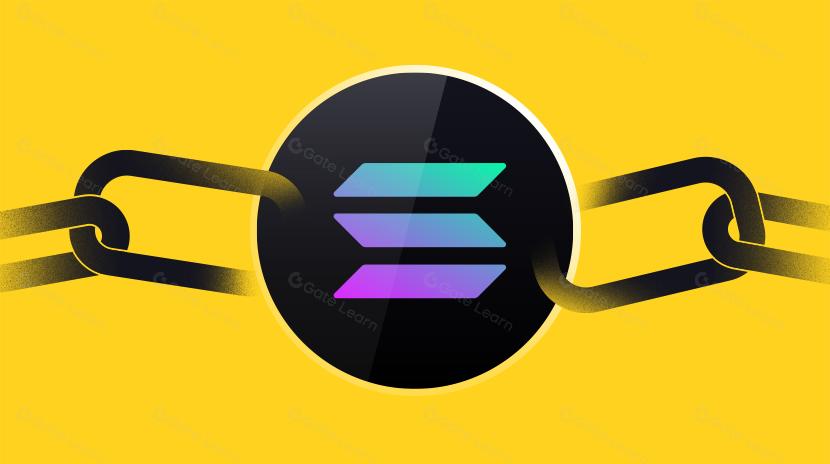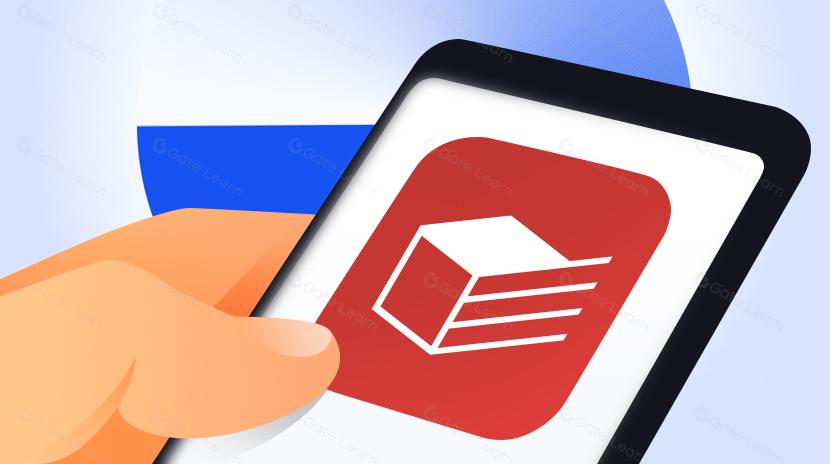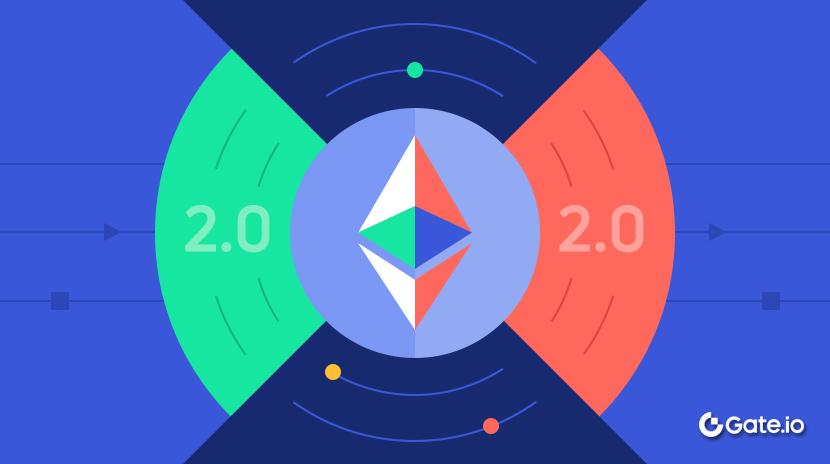Reevaluating the Potential of EigenLayer Restaking
This article was originally titled "Rethinking the Potential of EigenLayer Restaking: Breaking the Boundaries of Trust."
TL;DR
- Blockchains like Ethereum enable collaboration without requiring trust between participants. However, this collaboration is limited by what can be proven on-chain. EigenLayer expands the boundaries of "truth," enabling broader trust through new forms of collaboration.
- Restaking ETH through EigenLayer allows validators to secure multiple Active Validation Services (AVS) simultaneously, improving capital efficiency and fostering a more interconnected, resource-efficient ecosystem.
- EigenLayer uses a dual-token model to address intersubjectivity and social consensus. When outcomes are disputed, the bEIGEN staking token can be forked.
- AVS lower the barrier to entry for new projects, but require sharing revenue with EIGEN and ETH stakers or compensating for liquidity and security needs through token inflation.
EigenLayer’s innovative primitives have made restaking and Liquid Restaking Tokens (LRT) major themes in crypto for 2024. The chart below highlights the evolving narrative from LRT to Liquid Staking Derivatives (LSD).

Source: Kaito
In summary, EigenLayer expands the limits of decentralized trust. Restaking primitives increase DeFi capital efficiency, while the EIGEN token broadens governance.
I’ve followed this sector closely and want to share my perspective on how restaking impacts validators and the wider ecosystem. Beyond the technical mechanisms, I’ll dive into the concept of intersubjectivity. When EigenLayer’s whitepaper first appeared, it seemed academic, but it’s central to how we understand blockchain governance and decentralized trust. Let’s explore further.
What Restaking Really Means
Before we dig into restaking, let’s revisit ideas from my article on layered Bitcoin. Crypto constantly pushes the boundaries of what’s possible, and layered blockchains introduce game-changing new features. Restaking is a new dimension for blockchains, redefining validator dynamics and capital efficiency.
Blockchains are trust machines. They’re built so you can do business and collaborate without trusting counterparties. Stakeholders lock up value (as collateral), replacing trust with economic incentives. Good actors earn rewards, while bad actors face penalties, including loss of collateral.
I learned about EigenLayer in-depth from Jordan McKinney’s video, which breaks down the protocol at a high level so even those short on time can understand the essentials. For a quick summary, here’s the TL;DR:
EigenLayer lets validators use staked ETH (that secures Ethereum) to also secure Active Validation Services (AVS). This isn’t just about more yield—it creates a new layer of responsibility and opportunity for validators. Currently, about 28% of circulating ETH (34 million ETH) is staked by Ethereum validators. EigenLayer has about 4.7 million ETH locked for restaking.
From Bitcoin to EigenLayer
To appreciate EigenLayer’s benefits, consider blockchain’s evolution. Bitcoin pioneered proof-of-work (PoW), with miners securing the network using energy and specialized hardware. It was a breakthrough, but had limitations: aside from storing value and payments, Bitcoin did little else, which is why it remains the most secure, decentralized network.
Bitcoin’s architecture is revolutionary yet inflexible. Miners are locked into their role and can’t repurpose hardware, limiting capital efficiency. Capital efficiency means maximizing value or output from your investment. This limitation is intentional—it aligns miner incentives with the network’s health and paved the way for blockchain’s next leap.
Ethereum drove the next wave of cryptoeconomics, introducing general-purpose computation for applications. Validators stake ETH, securing both the blockchain and a vast range of apps built on it. Suddenly, the capital securing Ethereum also supports a thriving application ecosystem. This was a significant advancement, but it introduced a challenge: Ethereum’s scalability bottleneck.
Layer 2 solutions (like Rollups) have since boosted Ethereum’s transaction throughput. With L2s, throughput jumped from 12-15 transactions per second (TPS) to about 200 TPS with Rollups. But Rollup sequencers bring centralization risks: sequencers are typically managed by the Rollup provider and control transaction ordering.
To mitigate this risk, multiple sequencers can be required to stake capital for the right to produce blocks and collect fees. However, this reduces capital efficiency because sequencer stake is separate from ETH staked on the Ethereum mainnet.

Restaking: Boosting Capital Efficiency
In traditional PoS, validators stake assets to secure the network. If staked capital can secure additional services and increase capital efficiency, that’s the core idea of restaking. Validators can secure Ethereum and, by restaking ETH through EigenLayer, also secure other services.
Restaking is a natural evolution—making better use of existing resources. Validators take on additional responsibilities for extra yield, and the network gains in security and efficiency.
EigenLayer enables validators to use their staked ETH to secure both Ethereum and Active Validation Services (AVS). Validators set an EigenPod smart contract as their withdrawal address instead of their Externally Owned Address (EOA). The EigenPod then acts as an intermediary between validator and AVS, assessing performance and deciding whether ETH should be slashed at withdrawal.
Restaking isn’t just about yield—it fundamentally changes how we view capital in blockchain ecosystems. Traditionally, staked capital could only secure the network. Restaking disrupts this, allowing capital to serve multiple roles and maximize utility.
This model also introduces new risks. Validators must not only comply with Ethereum’s consensus, but also meet AVS requirements. This added responsibility means greater diligence—failure could result in slashing and loss of funds.
Measuring the Impact
Great businesses are driven by numbers. With a basic grasp of restaking, let’s examine its potential impact on crypto at large. AVS provides ETH validators with incremental yield on top of base staking rewards.
Currently, about 27% of ETH’s circulating supply is staked. As staking grows, base yields fall—by design, base yield increases more slowly than capital inflows. Validators need new yield sources, which is where restaking comes in.
The sensitivity chart below models incremental AVS yield for validators, using three variables: ETH market cap, staking percentage, and added AVS yield. For example, at a $600 billion market cap, with 50% of ETH staked and AVS offering 1% extra yield, validators would earn an additional $3 billion per year. This quantifiable boost highlights restaking’s ecosystem value, making it a key innovation for PoS networks like Ethereum.

Extra restaking yield isn’t just about profits—it helps build a stronger, more resilient network. As Ethereum’s base yield drops due to increased staking, restaking may be the best way for validators to stay profitable and avoid exiting the network. By providing more earning opportunities, EigenLayer keeps the network secure and incentivizes participation.
Restaking adds complexity. Validators must now weigh AVS performance and security, and the risks for each service. This demands a more sophisticated approach—balancing rewards and risk tolerance.
Currently, AVS does not implement slashing, so validators can join new AVS and earn rewards at no cost. Once slashing is activated, validators may not be able to participate in every new AVS, and opportunities for new revenue could decline as the number of AVS they can serve shrinks.
Intersubjectivity: Truths Blockchain Can't Prove
With memecoins and speculation everywhere, it’s easy to forget the real purpose of tokens. For example, Ethereum’s ETH is not just a gas token; it’s essential for PoS consensus and secures the blockchain. Without ETH, Ethereum doesn’t exist.
When designing tokens, teams or communities must define their functions from the start. These constraints are critical—they determine utility. While changes can happen later, major updates require broad consensus, which is tough given blockchain’s core values of immutability and predictability.

Let’s shift gears. In previous articles like Humpy vs Compound DAO, I’ve discussed how blockchain is about more than technology—it’s about people and communities. This is where the concept of intersubjectivity matters. It may sound philosophical, but it’s deeply relevant to blockchain governance.

Intersubjectivity refers to truths that can’t be proven on-chain, but are accepted by rational actors as social facts. For example, suppose ETH is priced at $10. Data may say otherwise, but what if there’s a dispute? It’s not just subjective—most rational actors would agree the statement is false. EigenLayer’s EIGEN token is designed to address these intersubjective issues.
EigenLayer’s approach is notable for recognizing that not all decisions can be made solely with objective, on-chain data. Take data availability services: nodes must prove data is stored and can be retrieved. Service nodes could collude to provide on-chain proof, but if users try to download the data and it’s missing, users need ways to challenge this "majority tyranny."
This means that a majority of stakeholders or participants might make decisions that aren’t best for the ecosystem, or unfairly punish minority or individual participants. EigenLayer empowers users to challenge such systemic problems.
Can you challenge anything you dislike? No. Challengers must pay a cost, burning tokens to initiate a challenge.
In reality, truth isn’t always provable on-chain. Blockchains are built for binary logic, but struggle with facts that can’t be proven on-chain. EigenLayer introduces intersubjectivity to blockchain governance to address this. Blockchains like Ethereum enable trustless collaboration, but are limited by what’s provable. EigenLayer expands trust by broadening the definition of "truth."
For example, suppose a validator is accused of malicious actions. Evidence may be unclear—maybe it’s intent rather than concrete behavior being questioned. In traditional blockchains, resolving such disputes is difficult, since systems are built for objective data. With EigenLayer’s intersubjective approach, the community can weigh facts and collective judgment for a decision.
How Does It Work?
Normally, when an on-chain disagreement arises, blockchains fork. For instance, after the 2016 DAO hack, Ethereum forked for social consensus, even though "code is law" suggested it shouldn’t.
EigenLayer doesn’t fork the base layer or L2. It’s built on Ethereum. If a dispute occurs, the EIGEN token is forked. The token contract on Ethereum is redeployed, changing ownership and punishing malicious actors by reducing or removing their forked tokens.
Dual-Token Model
Traditional staking and governance use a single native token for staking and related activities. This can create issues, especially with disputes that can’t be resolved on-chain. EigenLayer introduces a dual-token system—EIGEN and bEIGEN—to separate concerns and boost flexibility and security.
- EIGEN: Used for non-staking activities. It’s tradable, usable in DeFi, and exposed to fewer governance risks.
- bEIGEN: Used for staking within EigenLayer. Users convert EIGEN to bEIGEN for staking, subjecting it to slashing or forking risks if disputes arise.

This separation makes EigenLayer more resilient and flexible. EIGEN holders uninterested in staking can use their tokens broadly, without governance worries. bEIGEN is for those who choose to stake and accept extra responsibility and risk.
How the Dual-Token Model Works
If failures occur—like data availability problems, oracle errors, or other disputes not easily solved on-chain—bEIGEN forks, creating two versions: one for the original state, one for the community’s resolution.
Only bEIGEN holders who participate in staking are affected by disputes; EIGEN holders remain unaffected unless they convert to bEIGEN.
Ultimately, the dual-token model lets EigenLayer resolve complex intersubjective problems without disturbing the wider ecosystem. It sets a clear boundary between staking and other uses, providing a robust, adaptive platform for decentralized governance and dispute resolution.
Practical Example in EigenLayer
In blockchain, forks represent decisions that can change the network’s direction. EigenLayer’s fork mechanism is a great example, using forks to reflect community consensus in disputes.
Let’s look at a practical case.
Prediction Market: RFK Jr. and EigenLayer’s Approach
Recently, Polymarket faced controversy resolving the Robert F. Kennedy Jr. presidential prediction market. Kennedy announced he was dropping out, but later took actions consistent with staying in the race—filing for new ballots, stating in interviews he remained a candidate—leading to debate. Despite two challenges, the outcome was "yes." UMA oracle confirmed the result, but many participants felt this didn’t reflect reality. UMA’s lack of stake in the outcome may have contributed.
EigenLayer’s forking approach could provide a better solution. In such cases, stakeholders could fork the market: one outcome says Kennedy withdrew, the other says he remains a candidate. The community votes on which reflects reality, with the dominant fork becoming the accepted answer. This allows for nuanced, community-driven outcomes that align interests with fairness and accuracy.
By leveraging EigenLayer’s intersubjective forking, prediction markets can better handle complex and changing scenarios, ensuring decisions are both accurate and reflect community consensus, protecting platform integrity and trust.
EigenLayer requires challengers to pay a significant cost: burning bEIGEN tokens to initiate a challenge. If the community sides with them, they receive value in the new forked tokens, and may earn a reward.
bEIGEN holders redeem the fork they support. Multiple forks can coexist, but values differ based on market demand. Ideally, EIGEN’s value equals the sum of bEIGEN and its forks. When redemptions favor one fork, the community’s decision is clear.
These examples are not just theory. They represent real scenarios possible on EigenLayer, highlighting the need for flexible governance systems that adapt to complex realities.
Balancing Ecosystem Needs with Economic Challenges
EigenLayer offers a promising model for expanding decentralized trust, but introduces new challenges—especially for AVS. Some AVS are standalone apps seeking independent value; others are foundational services benefiting from demand created by other EigenLayer services.
For these AVS, joining EigenLayer can drive utility and demand, overcoming bootstrapping challenges. Sharing revenue with ETH/EIGEN stakers may be a reasonable tradeoff for ecosystem-driven demand and shared security. This could foster an interconnected network of services, but long-term sustainability is uncertain.
Standalone AVS face other considerations, similar to independent apps aiming to become appchains. While they must share revenue with ETH/EIGEN stakers, this cost should be weighed against alternatives—bootstrapping security and liquidity separately. EigenLayer gives access to a large security pool and user base, reducing launch costs and potentially offsetting revenue sharing. As these services mature, they may reconsider this approach’s long-term value.
Purposeful Complexity
EIGEN, bEIGEN, and forking mechanisms expand blockchain governance into new territory. By letting communities resolve intersubjective disputes, EigenLayer strengthens security and adaptability for decentralized systems, supporting a more resilient blockchain ecosystem.
As projects evolve, questions remain: Can EigenLayer maintain competitive revenue sharing compared to independent bootstrapping? Does this model foster innovation, or create new dependencies and centralization?
This complexity is intentional. Integrating with existing DeFi protocols isn’t easy and presents challenges.
Ultimately, EigenLayer isn’t just about restaking or earning yield—it’s about expanding the boundaries of decentralized trust. It’s designed to handle off-chain matters, making community consensus the final arbiter of truth.
Statement:
- This article was originally published by [ForesightNews] with the title "Rethinking the Potential of EigenLayer Restaking: Breaking the Boundaries of Trust." Copyright belongs to the original author [Saurabh Deshpande]. If you have any reposting concerns, please contact the Gate Learn team, who will address them according to relevant procedures.
- Disclaimer: The views expressed are those of the author and do not constitute investment advice.
- Translations into other languages are provided by the Gate Learn team. Reproduction, distribution, or plagiarism of this translation is prohibited unless Gate is clearly cited.
Related Articles

The Future of Cross-Chain Bridges: Full-Chain Interoperability Becomes Inevitable, Liquidity Bridges Will Decline

Solana Need L2s And Appchains?

Sui: How are users leveraging its speed, security, & scalability?

Navigating the Zero Knowledge Landscape

What is Tronscan and How Can You Use it in 2025?
